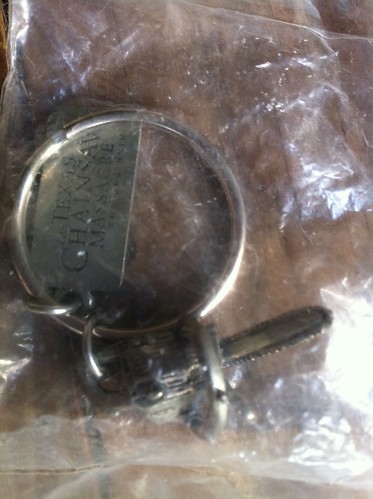 |
| Swag from the premiere of TEXAS CHAINSAW MASSACRE: THE BEGINNING |
I think that a version of this was published--in French-- in L'Ecran Fantastique in 2006, as I remember getting paid for it.
For the last thirty years, the Texas Chainsaw Massacre franchise has featured the character "Leatherface," who has been one of the most enigmatic horror icons in genre films. He chainsaws, he chases, he apparently enjoys himself. Yet we never knew exactly why or how he developed his desire to sink his chainsaw into human flesh.
The new film Texas Chainsaw Massacre: The Beginning attempts to explain Leatherface’s origins. That doesn’t mean a wee Thomas Hewitt sitting in a therapists office discussing chainsaws and childhood trauma. Rather, this prequel to the events of the Texas Chainsaw Massacre focuses on the moment when the procurement and consumption of human flesh started to seem rational for the crazy, cannibalistic Hewitt family.
This gritty and darkly-shot film opens with Leatherface’s birth on the slaughterhouse floor. Abandoned by his mother, he’s taken in by the Hewitts. A brilliant and brief title sequence outlines Leatherface’s childhood.
The film then jumps to 1969, when the rural Texas slaughterhouse where Leatherface (Andrew Bryniarski) works is closing. Leatherface isn’t happy about losing his job, though it’s difficult to read his expression behind the black shroud covering his face.
Meanwhile the Hewitt’s hometown is threatening to become a ghost town without the money the slaughterhouse brings in.
